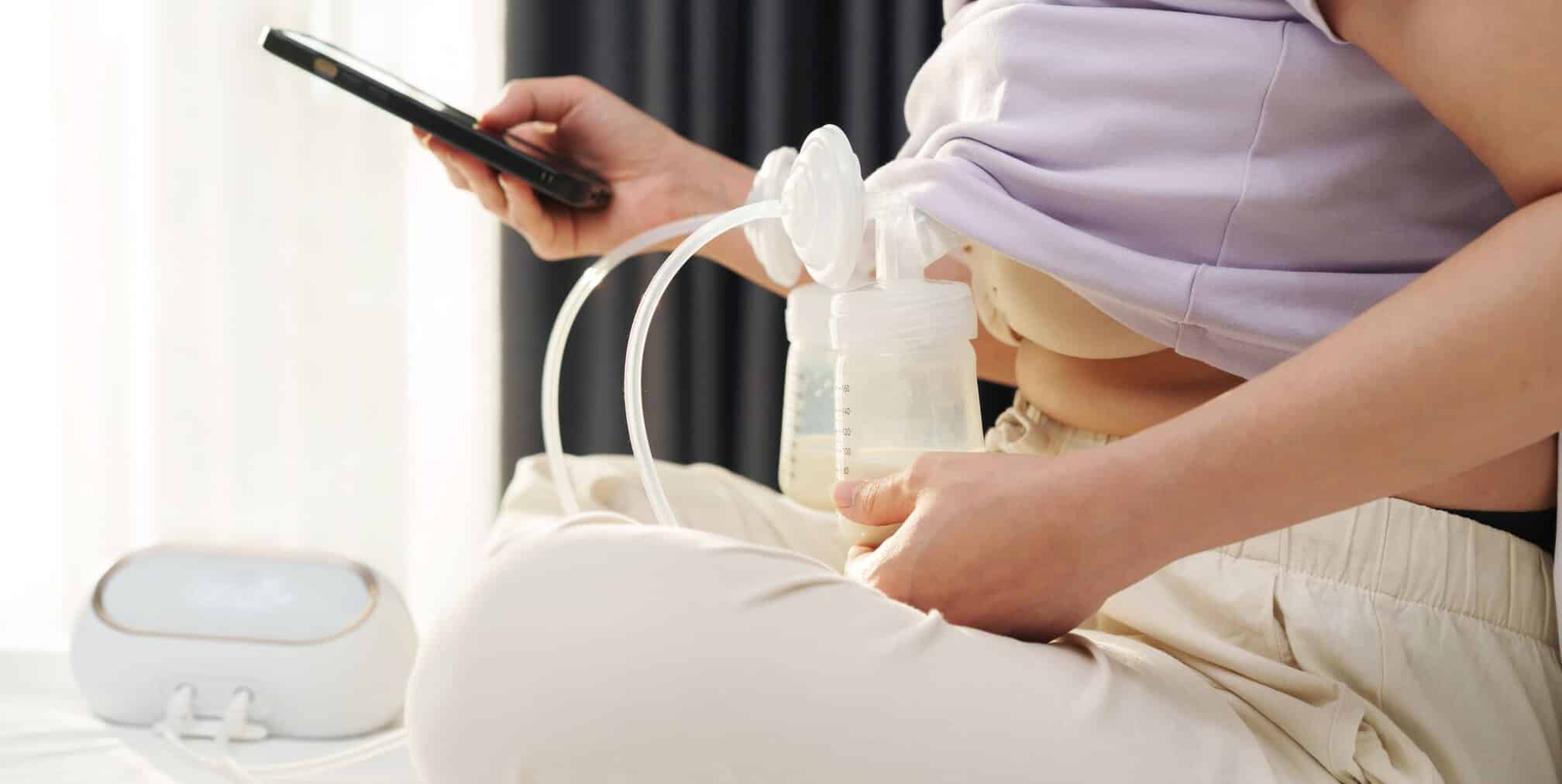The demanding world of medicine often leaves little room for personal life, let alone the profound shifts of new parenthood. For Dr. Noopur Ghade, an obstetrics and gynecology (OBGYN) physician at Tufts Medical Center in Massachusetts, the journey back to work after welcoming her son, Sahaan, seven months ago, presented a unique set of challenges. An avid and successful breastfeeder, her primary goal was to continue nourishing Sahaan with her milk for at least a year, a commitment that felt daunting when faced with the realities of a bustling hospital and a surgical career.
The Return to the Operating Room
Noopur’s initial anxieties about returning to work were palpable. “I was nervous about going back to work. Mostly it was the pumping part of it that I was worried about,” she admits. While her husband, Amar, was able to care for Sahaan for the first few months, alleviating the immediate need for a nanny, the logistical puzzle of maintaining her milk supply and pumping enough to feed Sahaan remained. Her breastfeeding journey had started with fundamental concerns: “Will he latch? Would I have enough milk?”, but now, with those early hurdles cleared, a new, equally stressful challenge loomed: integrating motherhood with her demanding role as a physician.
The decision of when to return was also complex. “I was given the option to have up to 5 months, which was amazing. The last job I had only gave 6 weeks of maternity leave,” she explains. Yet, as a surgeon, time away from the operating room means missing out on crucial hands-on experience. “I was debating if I should take the whole time. I’m in a surgical field, which is all about hands-on experience; you can’t stay connected to this field if you’re not in the operating room performing surgeries. I was worried about what it would be like if I took the full 5 months.” Ultimately, the desire to cherish those irreplaceable early months with Sahaan outweighed her professional concerns. “Then I decided to figure out work later so I would not regret not being with Sahaan during this very special and unique time in our lives.” Noopur’s experience echoes the dilemma many mothers face: the difficult choices between career progression and the fleeting nature of early childhood. Prioritizing postpartum leave and breastfeeding can indeed entail significant sacrifices in a workplace that often doesn’t pause for personal milestones.
Uncharted Territory: Pumping on the Go
The practicalities of pumping at work were a mystery at first. “I had no idea how to pump at work,” Noopur reveals. “I didn’t have any friends in my field that were pumping, and most of my coworkers were older and past this stage in their lives.” A friend’s suggestion of a wearable pump offered a possible solution. Initially, Noopur had been cautious about pumping at home to avoid creating an oversupply or accustoming Sahaan to bottles. A family wedding in January provided an unexpected trial run for pumping on the go, but it also amplified her apprehension. “It made me dread pumping at work because I was constantly worried about when to pump and having let-downs during the event.”
Pumping During a C-Section
Upon her return to work, Noopur quickly encountered the harsh reality of her schedule. “In the beginning at work, I was having issues finding the time to pump. I was engorged and feeling uncomfortable.” Determined not to let this deter her, Noopur decided to take a groundbreaking approach. Her initial plan was to nurse Sahaan in the morning, see a few patients, and then pump. However, finding a break between patients proved impossible. Refusing to compromise her breastfeeding goals, she made a bold decision: she would pump while seeing her patients.
“I didn’t have a break to sit and pump, so I would run to my office, put the pumps in my bra, turn on the pump, then put the motor in my white coat pocket, and go right back to my patients,” she recounts. Initially, she felt compelled to let her patients know that she was pumping. “I felt the need to explain what I was doing to my patients. I would tell them: ‘If you hear something or see the tube coming out of my pocket, that’s because I’m wearing a wearable pump.'” As an OBGYN, Noopur sees women of all ages, roughly half of whom are expectant or postpartum mothers. “Pregnant moms asked about the pumping, how it works and feels, and I can share my personal experience with them. Older women were fascinated by the concept, and many said they wished they could do something like this when they returned to work. I got support across the board and no negative feedback for pumping on the job.” This openness not only normalized her experience but also provided a unique opportunity for patient education and connection.
The most surprising moments, however, occurred in the operating room. “One day, I was pumping during a C-section. When someone on the team suddenly asked, ‘What is that?’ Everyone was so surprised when I told them I’m pumping. The whole team of 7-8 people just stopped what they were doing. They were so impressed!” Noopur laughs. “I was self-conscious at first, but people just think it’s so cool and most wish they could have done this when they were pumping. Now, during surgeries, I ask the surgical nurse to go into the app on my phone and turn it off because I will forget, and I don’t want to pump for too long.” Her experience highlights a fascinating intersection of modern technology and the enduring needs of new mothers, even in highly sterile and demanding environments. As it turns out, pumping in the OR is not uncommon among surgeons, a fact Noopur discovered through a Facebook group called “Dr. Milk.” A wearable pump, like other wearable personal equipment (such as glucose monitors), can be used as long as sterile protocols are maintained.
Beyond the Pump: Prioritizing Self-Care
Despite the convenience of a wearable pump, Noopur quickly learned that it doesn’t eliminate the need for breaks. “I was nervous about the leaking because you need to move a lot during a C-section, you need to move around, push and pull, and sometimes you’re standing on a stool. But if I turn the pump off in time, there are no issues. I’ve also pumped during vaginal deliveries.” While wearable pumps offer incredible flexibility, Noopur emphasizes a crucial point: “Having options is great, but it kinda pushes us to feel like we need to do certain things, like I thought if I can wear a wearable pump, I don’t need a break. But I find I still need to ask for these breaks. I can wear a wearable pump and keep on working, but I still need to take a break and drink and eat a granola bar. It can’t push us to go beyond our limit.” Her insight is a powerful reminder that while technology can bridge gaps, it shouldn’t be used to justify pushing mothers past their physical and mental limits. It raises a broader societal question: instead of making mothers perform the impossible, could workplaces evolve to better support their biological needs? Could we see a future where mothers can work with their babies on them like humans have done for most of their existence?
Smart Strategies for Seamless Pumping
Noopur’s journey has made her a master of efficiency, and she generously shares her practical tips for other working mothers. “I was trying to make everything as convenient as possible because I knew if it was too hard, I would not do it or delay it, so I was trying to make it very accessible.” She transformed a pumping backpack from Sarah Wells into her primary work bag. For hygiene, she uses the Pumparoo wet-dry bag to store pump parts between sessions. Noopur puts the pumpu parts in the wet-dry bag and then stores them in the cooler compartment of the Sarah Wells bag, eliminating the need for constant washing. She stocks the cooler compartment with fresh ice packs every morning. The Sarah Wells bag also has a staging mat for easy setup and disassembly. To store milk throughout the day without constant trips to the doctor’s lounge, she relies on the Ceres Chill breast milk chiller. “The fact that the milk can be stored in the breast milk chiller for 20 hours helped when we forgot to take the milk out of it one night. When my husband remembered at 5 am, 18 hours after I pumped it, the milk was still cold.” At home, she transfers milk from the chiller to a glass jar for easy pouring into glass bottles for feeding and uses silicone bags for freezing. Her wearable pump of choice is the Elvie Stride 2, which she finds as effective as her Spectra.
“I think you should try to make it as easy as you can: if you have the means to, buy extra pump parts, extra bottles; it’s so hard already, so if there are more barriers, you’re making it harder for yourself. It’s worth it and keeps you sane.” Noopur also offers a vital piece of emotional wisdom: “At one point my supply started to decrease and I panicked, but I reminded myself that if I was nursing, I wouldn’t know I was getting a few less ounces. Pumping makes us focus more on the numbers. It’s important to remember that supply fluctuates and sometimes we will pump less milk, and that’s okay.”
Making the Impossible Possible
Dr. Ghade’s story is a testament to the incredible resilience and ingenuity of mothers. Her determination to balance a demanding surgical career with her breastfeeding goals, even in the face of logistical hurdles and societal expectations, is truly inspiring. By openly sharing her experiences, she not only demystifies the challenges of pumping in a professional setting but also advocates for a more understanding and supportive environment for working parents. Her journey highlights that while mothers often find extraordinary ways to make the “impossible” possible, the ultimate goal should be to create workplaces that truly accommodate and celebrate parents’ multifaceted roles.


